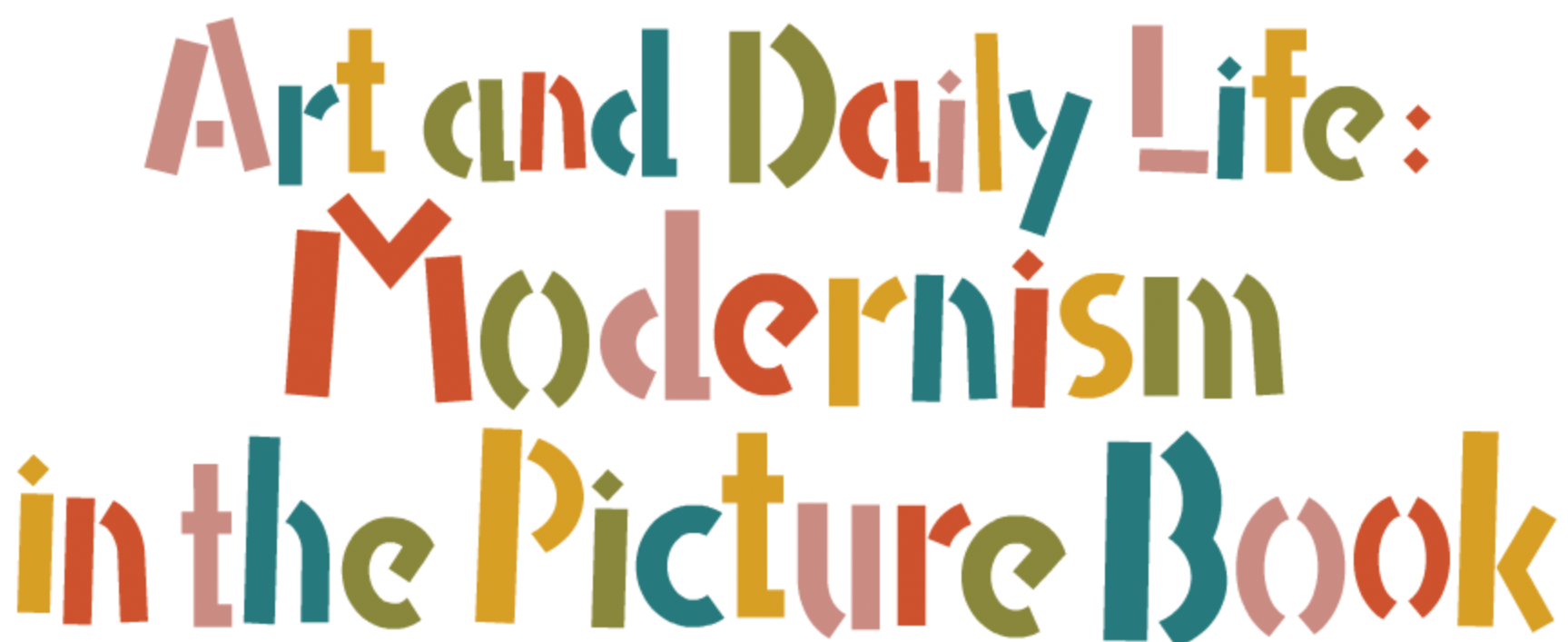本文
Bibliography

Ivan Ivanovich Samovar
Иван Иванович Самовар
GIZ; Moscow.
1929,
10 pages.
220x190 mm.
1/13
Ivan Ivanovich Samovar

2/13 Push an image to enlarge
(♪) Ivan Ivanovich Samovar. By Daniil Kharms. Illustrated by Vera Ermolaeva.
Ivan Ivanovich Samovar
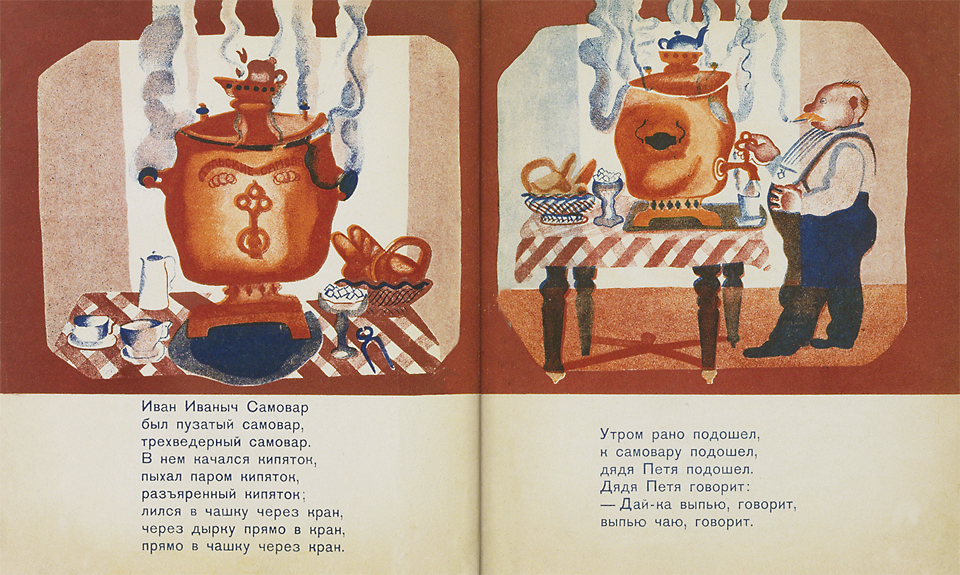
3/13 Push an image to enlarge
Ivan Ivanovich Samovar, old potbellied samovar, a great, big samovar. The water began to boil, the steam began to billow, then the hot water flowed from the tap, from the tap into the cup.
(♪) Early in the morning, came uncle Peycha, “Ah, let me have a cup of tea.”
(♪) Early in the morning, came uncle Peycha, “Ah, let me have a cup of tea.”
Ivan Ivanovich Samovar
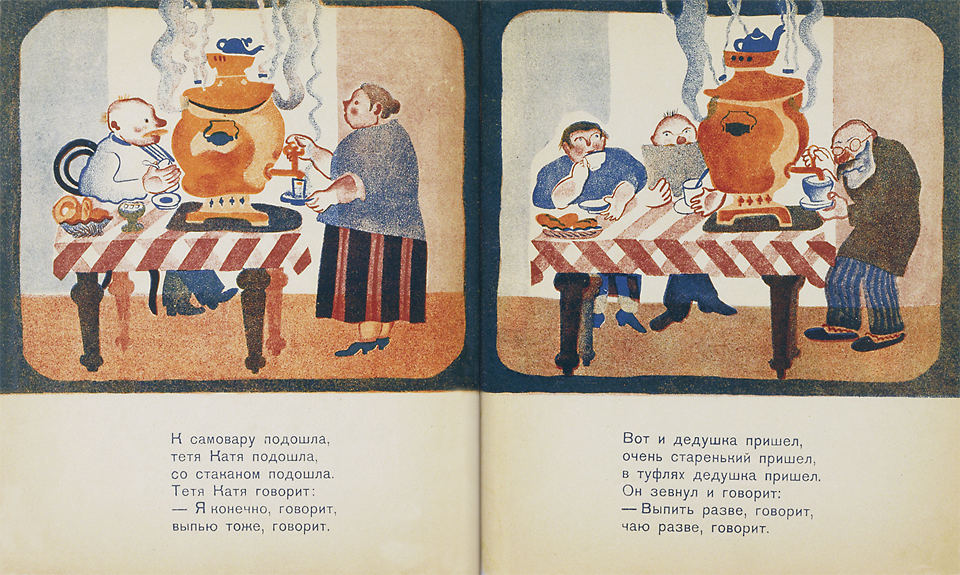
4/13 Push an image to enlarge
(♪) Then to the samovar came aunt Karcha a cup in her hand, “Of course, I, too, wish to have a cup of tea.”
(♪) Then, along came a very old man wearing slippers. He yawned and said, “Well, I guess I’ll stop to have a cup of tea.”
(♪) Then, along came a very old man wearing slippers. He yawned and said, “Well, I guess I’ll stop to have a cup of tea.”
Ivan Ivanovich Samovar
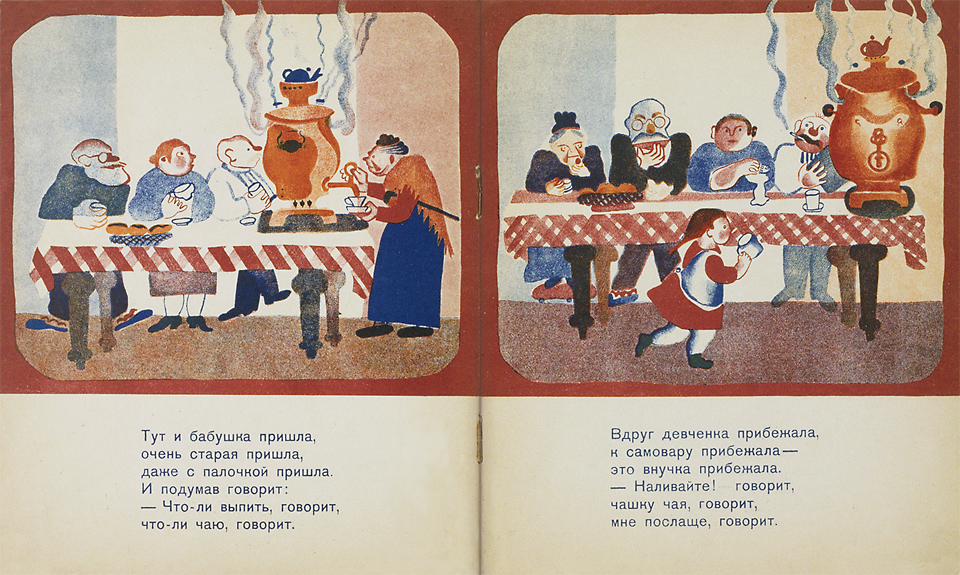
5/13 Push an image to enlarge
(♪) Then came an old woman. A most venerable old woman walking with a cane. She thought for a moment, and then said, “Well, I guess I’ll have some tea.”
(♪) Suddenly a little girl ran in, and rushed over to the samovar. “Make me tea! Make it really sweet, please!” Entreated the granddaughter.
(♪) Suddenly a little girl ran in, and rushed over to the samovar. “Make me tea! Make it really sweet, please!” Entreated the granddaughter.
Ivan Ivanovich Samovar
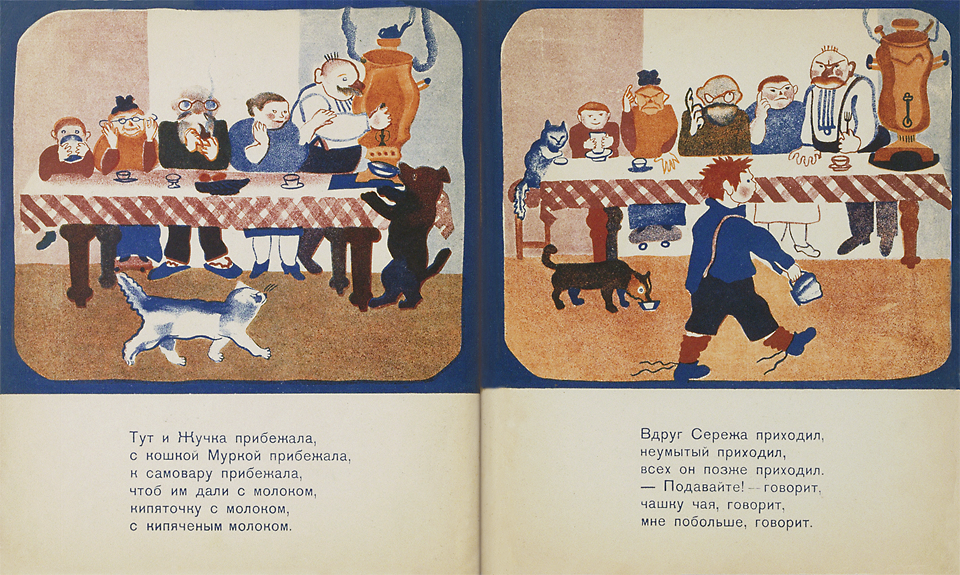
6/13 Push an image to enlarge
(♪) Now came the dog named Juchica together with the cat called Muchica ran toward the samovar, and begged for hot water with milk in it.
(♪) Then suddenly Seryoja appeared not even washing his face the very last to come, “Give me a cup of tea, and give me plenty!”
(♪) Then suddenly Seryoja appeared not even washing his face the very last to come, “Give me a cup of tea, and give me plenty!”
Ivan Ivanovich Samovar
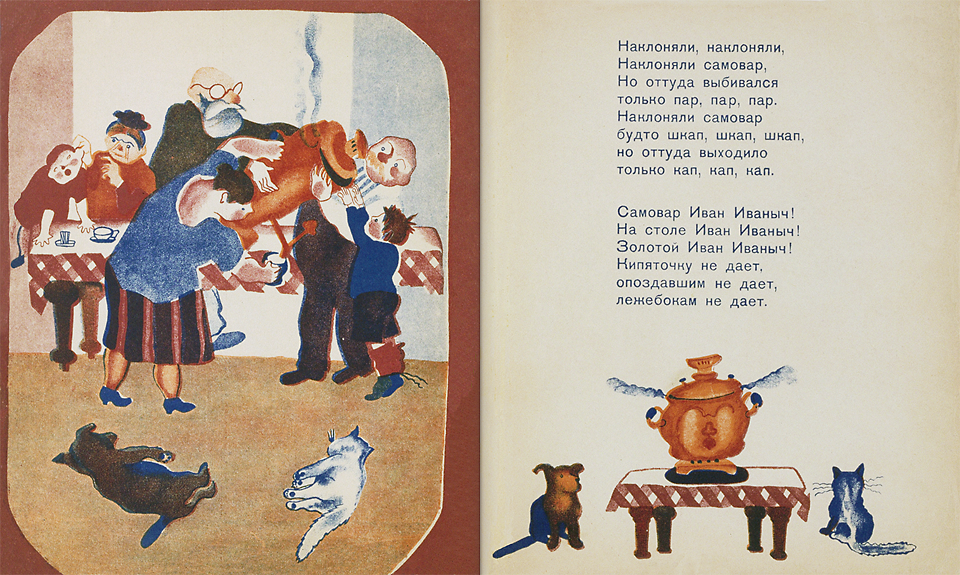
7/13 Push an image to enlarge
(♪) All together they tipped the samovar, tipped it right over, but in vain, only clouds of steam billowed up. Then from the samovar lying on its side like a chest dripped only a few drops of tea. Ivan Ivanowich Samovar! Ivan Ivanovich standing on the table! Glittering Ivan Ivanovich! He will never give hot water to anybody who is late, to anybody who is lazy.
No narration on page 8
Ivan Ivanovich Samovar

8/13 Push an image to enlarge
No narration on page 9
About the author 1/4
By Daniil Kharms (1905–1942)
Pictures by Vera Ermolaeva (1893–1938)\
1)
Kharms was a poet, writer, and playwright of the Russian avant-garde. He was born in Petersburg as Daniil Yuvachev. Since early childhood he had a lively imagination, inventing the pen name Kharms while still in elementary school. Kharms began writing poetry under the influence of the Futurist poet Velimir Khlebnikov, and in 1928 he organized the literary circle OBERIU and published experimental works written with a new poetic sensibility. Since publishing the kind of avant-garde works of the absurd he wrote for adults was difficult, Kharms took the advice of Marshak, who had praised his literary talent, and began to write for children. From 1928 his work in children’s magazines as well as Ivan Ivanovich Samovar and Million were published. However, Communist Party oppression of the avant-garde movement became severe and Kharms was arrested three times; he died in a prison hospital in 1942 when he was only thirty-seven years old.
9/13
No narration on page 10
About the author 2/4
2)
Illustrator Vera Ermolaeva was also a Russian avant-garde activist born in the district of Saratov. She studied at Bernstein Art School in Petersburg and was much interested in abstract art such as Cubism and Futurism. In 1918 she established the art group Segodnia (Today) and published picture books. In 1919 she went to Vitebsk in Belorussia to teach at the art school there and in 1921 became rector of the school succeeding Marc Chagall. Attracted to the work of Kazimir Malevich, the founder of suprematism, she participated in UNOVIS, the group Malevich founded in Vitebsk.
10/13
No narration on page 11
About the author 3/4
3)
She began again to illustrate picture books and children’s magazines in the late twenties in Leningrad. Her drawings of animals and nature are characterized by bold original brushwork and dark hues. While creating lithographs of Goethe’s Reineke Fox, her work was charged as anti-Soviet, and she was arrested and sent to a penal colony in Kazafstan, where she is said to have been executed.
11/13
No narration on page 12
About the author 4/4
4)
Both the writer and illustrator of Ivan Ivanovich Samovar lived tragic lives, but the book itself is amusing and innovative. Kharms’ word play gives the poems rhythmical and musical quality. Ermolaeva’s illustrations have a cinematic sense of motion with the table growing longer as the number of characters increase and the samovar getting slimmer as the hot water it holds decreases. The rich colors of her illustrations give her work the feeling of folk art enlivend by new influences.
12/13
Contents
13/13
